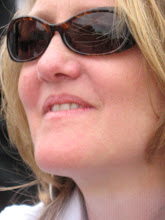 Take this poster of Cancan dancer, Louis Weber, who gained the nickname La Goulue, the glutton, from her habit of grabbing patrons’ drinks and downing their contents as she danced about the Moulin Rouge. She danced there with a wine merchant named Jacques Renaudin who took the stage name “Valentin le Désossé” (Valentin the de-boned) because of his sinewy, boneless way of moving. Lautrec features Valentin in the foreground of this advertising poster for the Moulin Rouge, where the artist was a regular customer (he even had a reserved table). He captures Valentin’s rubber band-like motions with a simple, bold brushstroke.
Take this poster of Cancan dancer, Louis Weber, who gained the nickname La Goulue, the glutton, from her habit of grabbing patrons’ drinks and downing their contents as she danced about the Moulin Rouge. She danced there with a wine merchant named Jacques Renaudin who took the stage name “Valentin le Désossé” (Valentin the de-boned) because of his sinewy, boneless way of moving. Lautrec features Valentin in the foreground of this advertising poster for the Moulin Rouge, where the artist was a regular customer (he even had a reserved table). He captures Valentin’s rubber band-like motions with a simple, bold brushstroke.
Valentin and La Goulue performed on the dance hall floor, rather than on a stage, as the audience, mostly male, milled about them. Notice how Lautrec pictures La Goulue lifting her leg. It was, indeed, her signature move to tease the spectators by dancing on one foot and swirling her dress until she was ready, with a quick upward flick her foot, to kick off a gentleman’s hat, thus revealing her heart-embroidered panties underneath.
 Another favorite Moulin Rouge dancer, and a dear friend of Toulouse-Lautrec was Jane Avril. Jane was the illegitimate daughter of an Italian nobleman and a Paris society girl. Jane was more beautiful and more stylish than La Goulue, the daughter of a laundress who started her career wearing the “borrowed” clothes of her mother’s clients. Jane, on the other hand, dressed the part of a refined lady, though her mother cast her off as a lunatic when Jane was only 16. She perfected a more prudish, yet no less provocative, style of the Cancan than that of La Goulue. Lautrec shows this in his posters depicting her in the plumbed hats that punctuated her costume, exposing only her slender lower leg, and puckering her lips as if ready to offer a kiss.
Another favorite Moulin Rouge dancer, and a dear friend of Toulouse-Lautrec was Jane Avril. Jane was the illegitimate daughter of an Italian nobleman and a Paris society girl. Jane was more beautiful and more stylish than La Goulue, the daughter of a laundress who started her career wearing the “borrowed” clothes of her mother’s clients. Jane, on the other hand, dressed the part of a refined lady, though her mother cast her off as a lunatic when Jane was only 16. She perfected a more prudish, yet no less provocative, style of the Cancan than that of La Goulue. Lautrec shows this in his posters depicting her in the plumbed hats that punctuated her costume, exposing only her slender lower leg, and puckering her lips as if ready to offer a kiss.
The men of the Moulin Rouge loved Jane Avril, who was often melancholy and withdrawn even in the constant commotion of the dance hall. Perhaps they were drawn to what they knew they could never have. We see Jane in this picture watching Yvette Guilbert, the Edith Piaf of her day, at the tiny café-concert, the Divan Japonais. Lautrec gives us Guilbert in her trademark blank gloves. And we can see by her pose and her locked arms covering the length of her torso that we will get no glimpse of undergarments from her.
Finally, Lautrec provides us clues into the character of Aristide Bruant, a former railway clerk turned popular singer known for his crude, bawdy songs and his propensity to insult the audience. No matter. They always came back for more.
Bruant started his career at the still celebrated Chat Noir (Black Cat), which later became his own café, the Mirliton, advertised here. Thanks to Lautrec, we know that Bruant held openly revolutionary views, as expressed by his red scarf and wide-brimmed hat; that he identified with the working-man rather than the bourgeoisie, as shown through his rough walking stick in lieu of a polished cane; and that he was a bit of a dandy, as revealed by his draped, black cloak.
Bruant was one of Lautrec’s first friends in Montmarte, where the artist made his Paris home. And Lautrec was the one person whom Bruant refused to insult. Indeed, when Henri Toulouse-Lautrec entered the Mirliton, Bruant would quiet the house and proclaim, “Here comes the great painter Toulouse-Lautrec…”
In his short lifetime of 36 years, and a career spanning less than 20, Toulouse-Lautrec left us 737 canvases, 275 watercolors, 363 prints and posters, 5,084 drawings, ceramic works, stained glass, and an unknown number of lost works. Step into his images for a trip back in time to Paris of the Belle Époque and the age of impressionism.
The exhibit, Hommages à Toulouse-Lautrec, runs through 3 January 2010.
Images:
Moulin Rouge, La Goulue, 1891, courtesy of Wikimedia Commons.
Jane Avril au Jardin de Paris, 1892, courtesy of Wikimedia Commons.
Divan Japonais, 1893, courtesy of Wikimedia Commons.
Aristide Bruant dans son cabaret, 1892-3, courtesy of Wikimedia Commons.
Sources:
http://www.lautrec.info/La-Goulue.html
Paris Art Studies, http://www.parisartstudies.com/



No comments:
Post a Comment